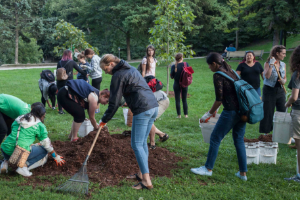The group created an interactive inventory of adoptable trees on Google Maps with over 200 trees, and learned about tree identification processes. This map was created as a tool to aid the Friends of Trinity Bellwoods group with running the Adopt-a-Park-Tree Program in the park. With accurate mapping and identification, a specific tree may be adopted by a member of the community and its health and overall status can be tracked.
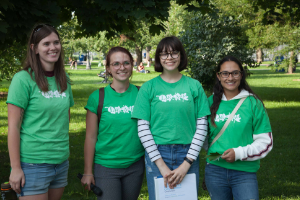
The YUFLs led the tour north along the main western path of the park, stopping along key park features, such as the greenhouse and pollinator garden. These key features act as an ideal example of successful community involvement at work! The greenhouse is used by the community as a place to grow seedlings in the spring and as a water source for those who have adopted park trees. The pollinator garden is one of many strategically located around the city and is part of the Butterflyway project initiated by the David Suzuki Foundation.
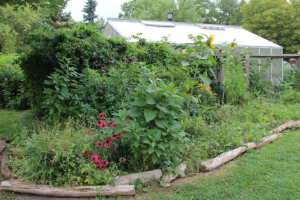
Tree identification, tree stresses, and historical significance were running themes throughout the course of the tour. A range of species were highlighted in order to showcase the diverse growing conditions and unique attributes, the historical and current cultural significance, and to spark the interest of the event participants to pay closer attention to their local canopy.
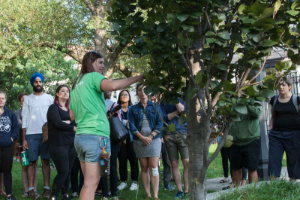
Between stops, Stephanie included a brief history of Trinity Bellwoods Park, Gore Vale, and the decisions made over Garrison Creek through the many decades. This addition to the tree tour allowed the tour narrative to be grounded in a sense of place and added context for the park’s identity in the historical development of the City of Toronto.
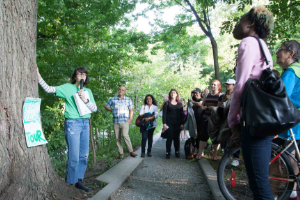
Julia compared Norway, silver, and sugar maples. She highlighted the differences and similarities between the leaves and provided tricks to correctly distinguish each species. She discussed how Norway maples are an invasive species that out-compete the native sugar and silver maples.
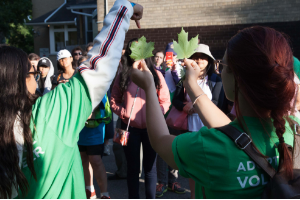
After the tour concluded, the YUFL team demonstrated and explained the importance of mulching trees. The participants quickly took on the challenge of mulching the younger trees in the north end of the park and enthusiastically used up the giant mulch pile in less than one hour! Participants enjoyed snacks, learned about urban environmental stewardship and took home free native shrubs to plant at their own homes. There was a wonderful positivity expressed from all involved. The event was a great success!
